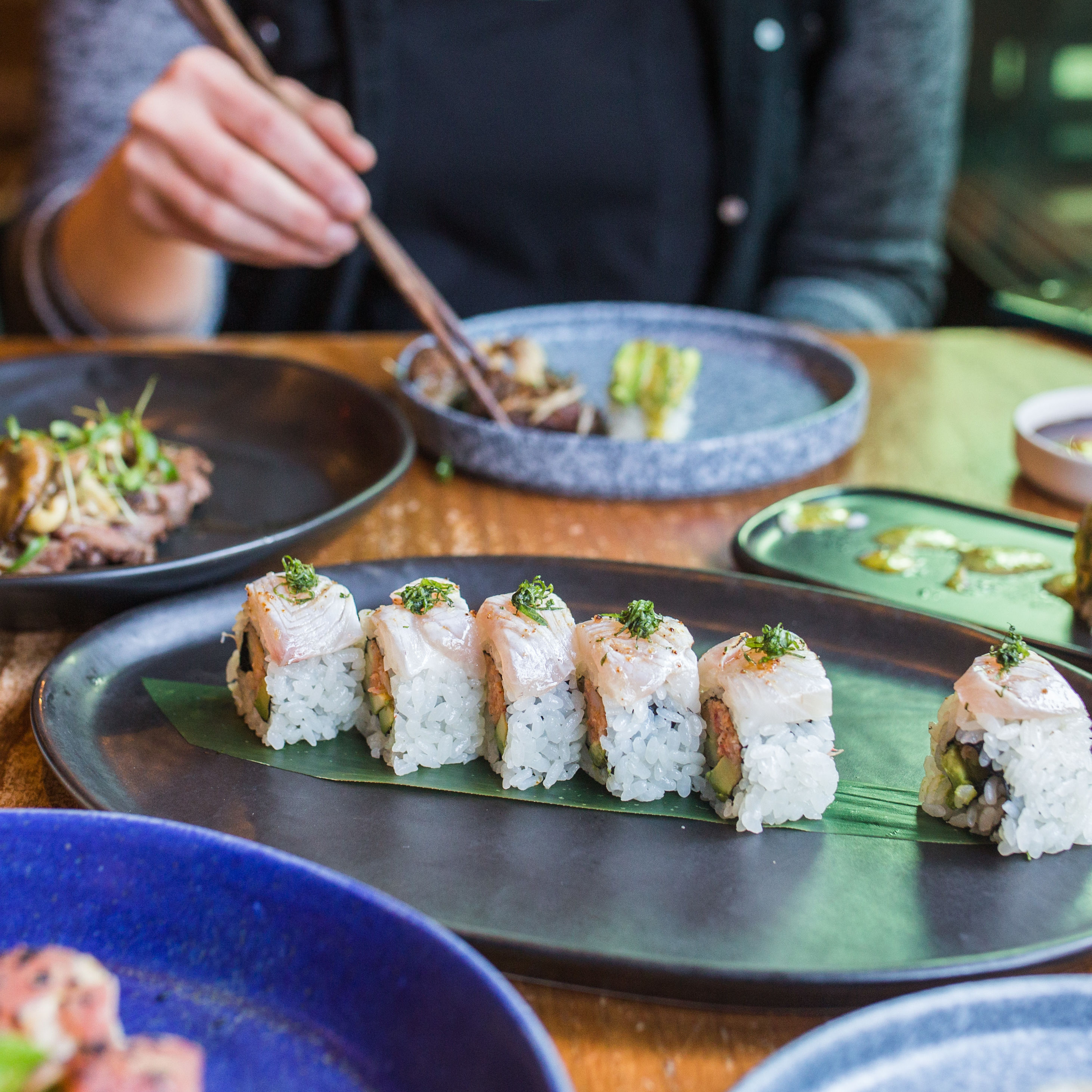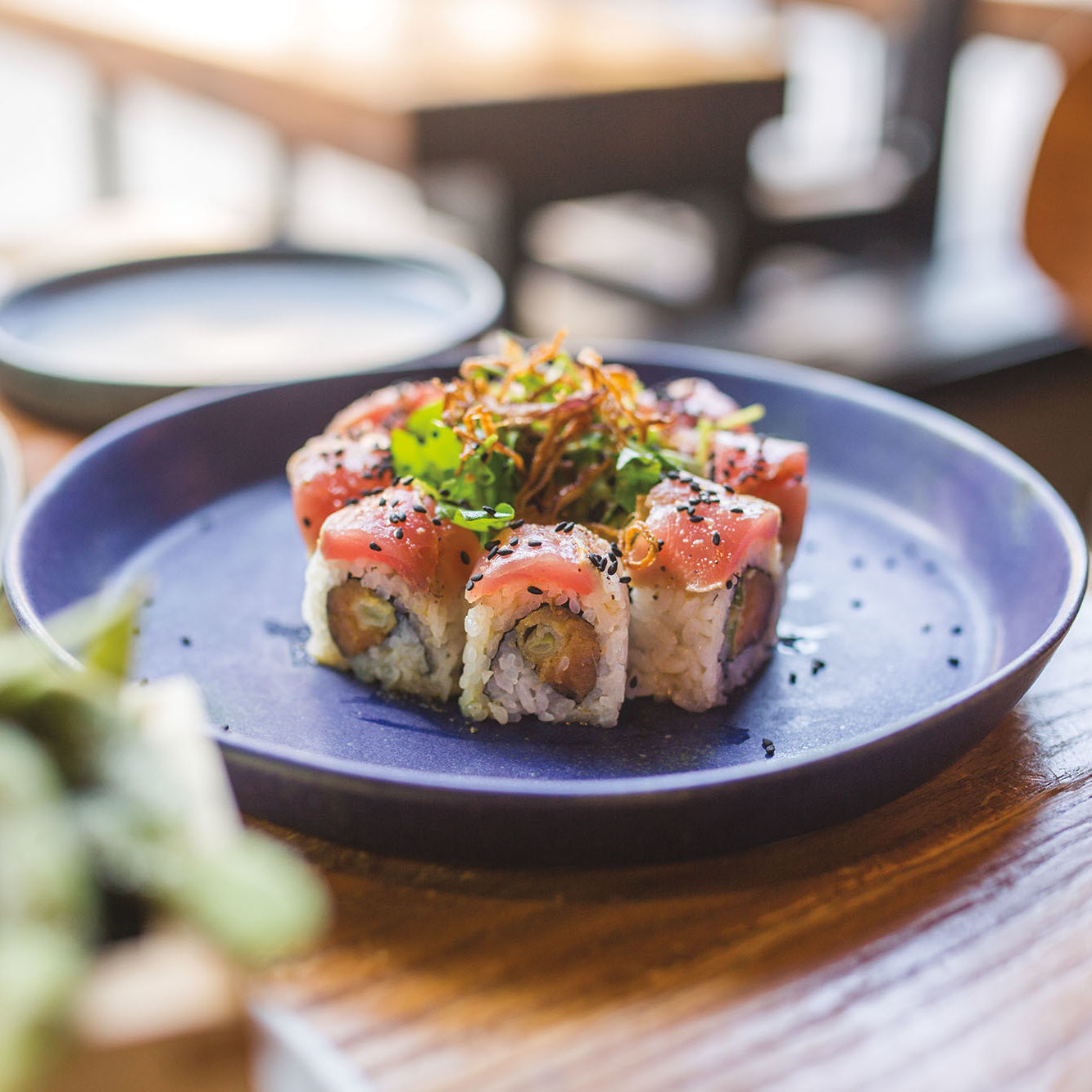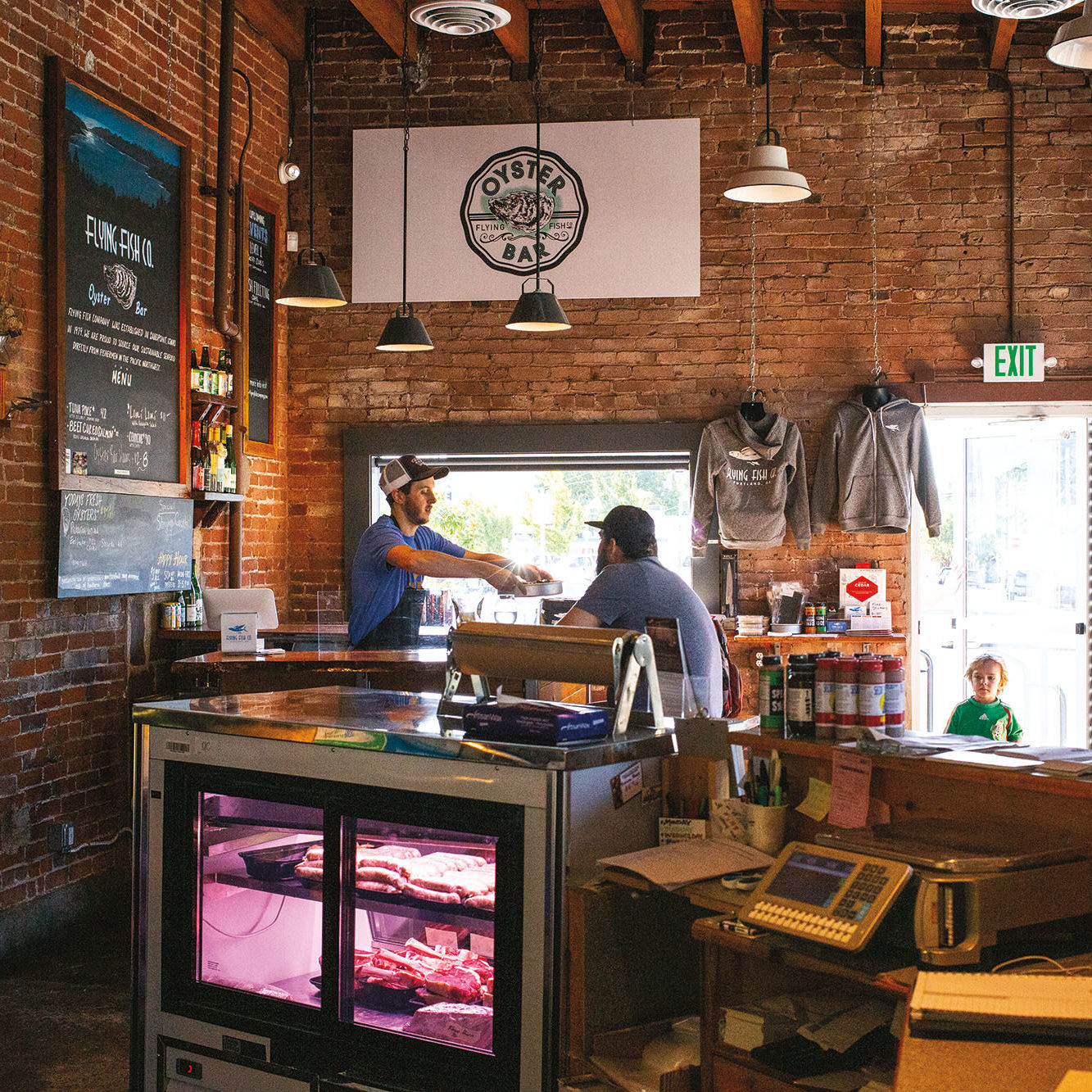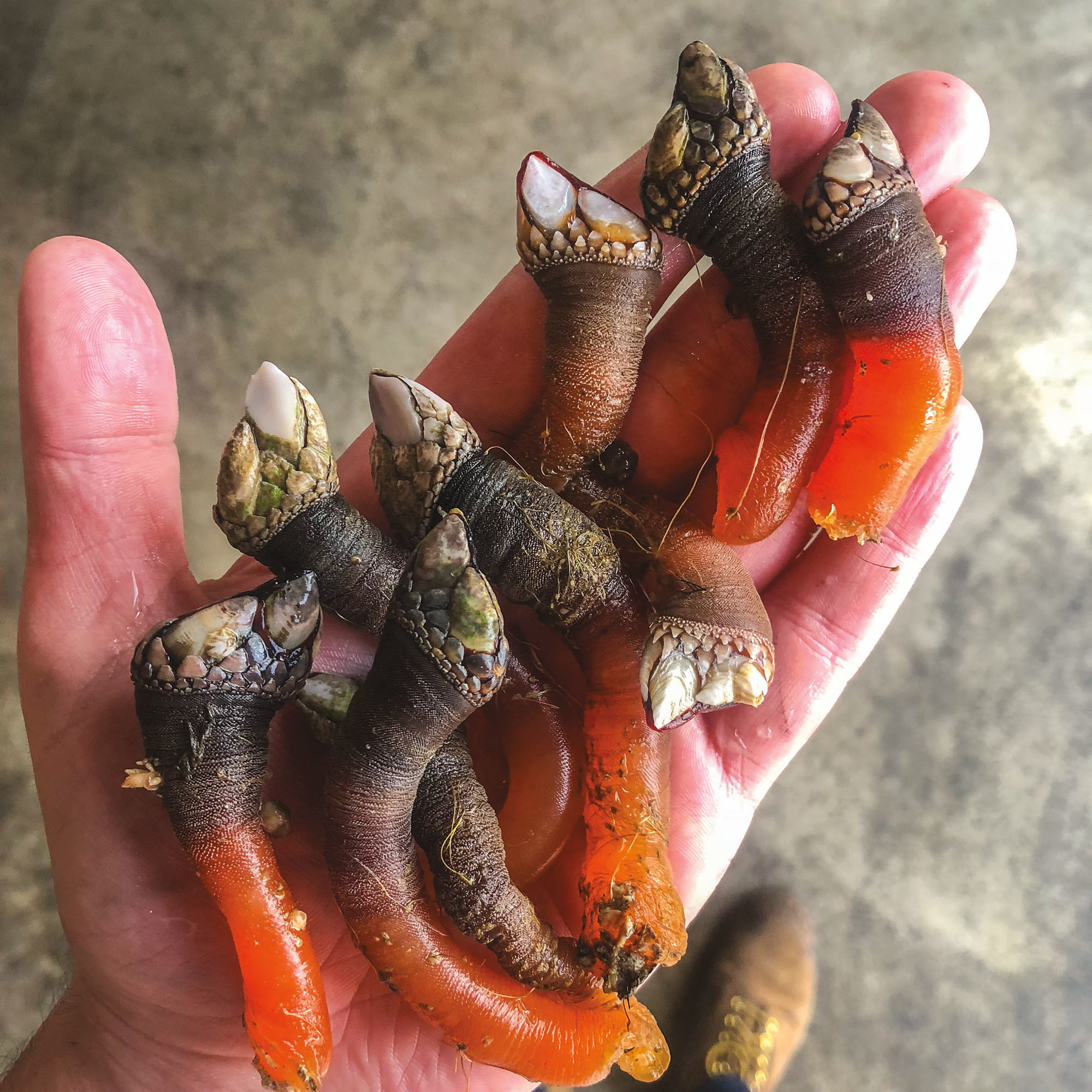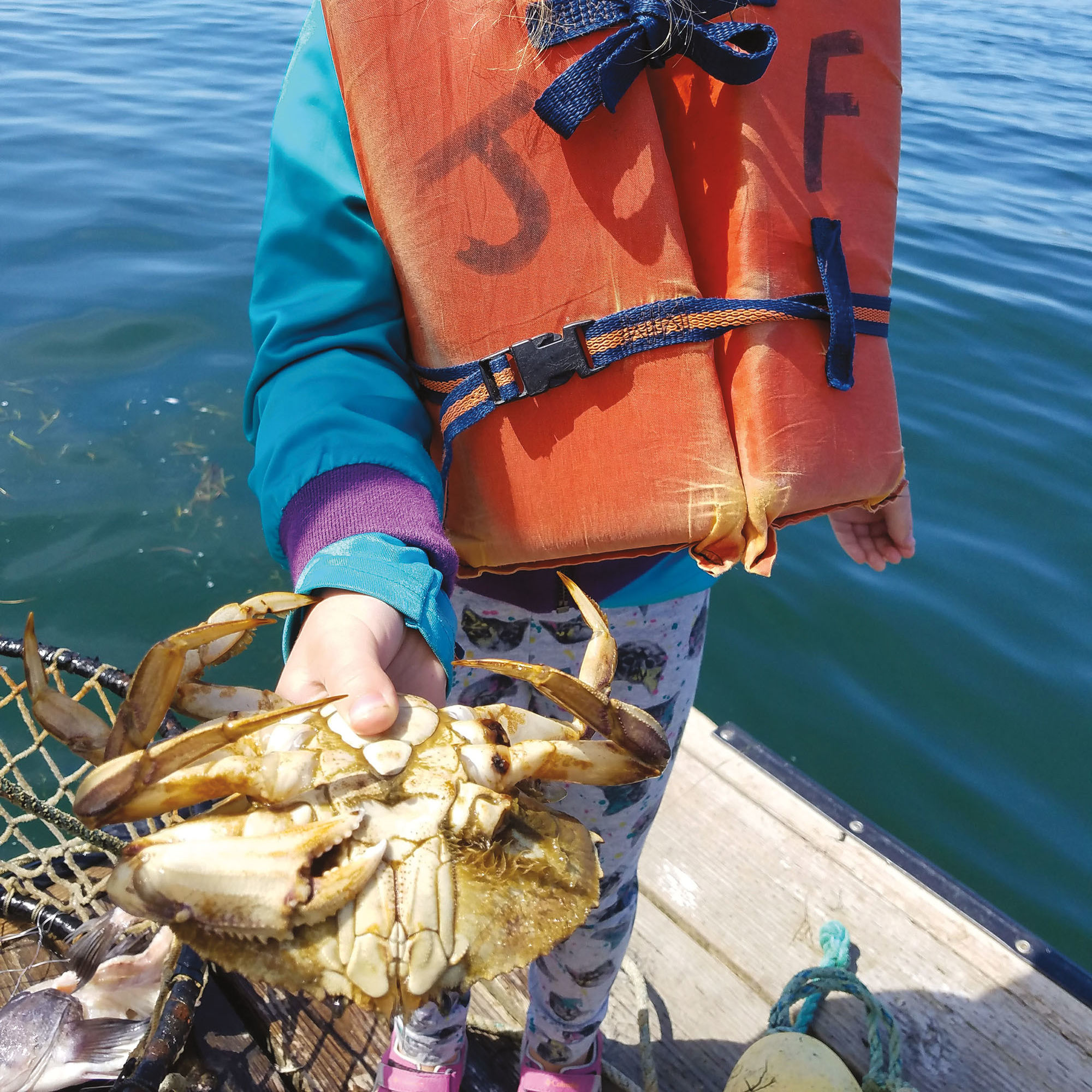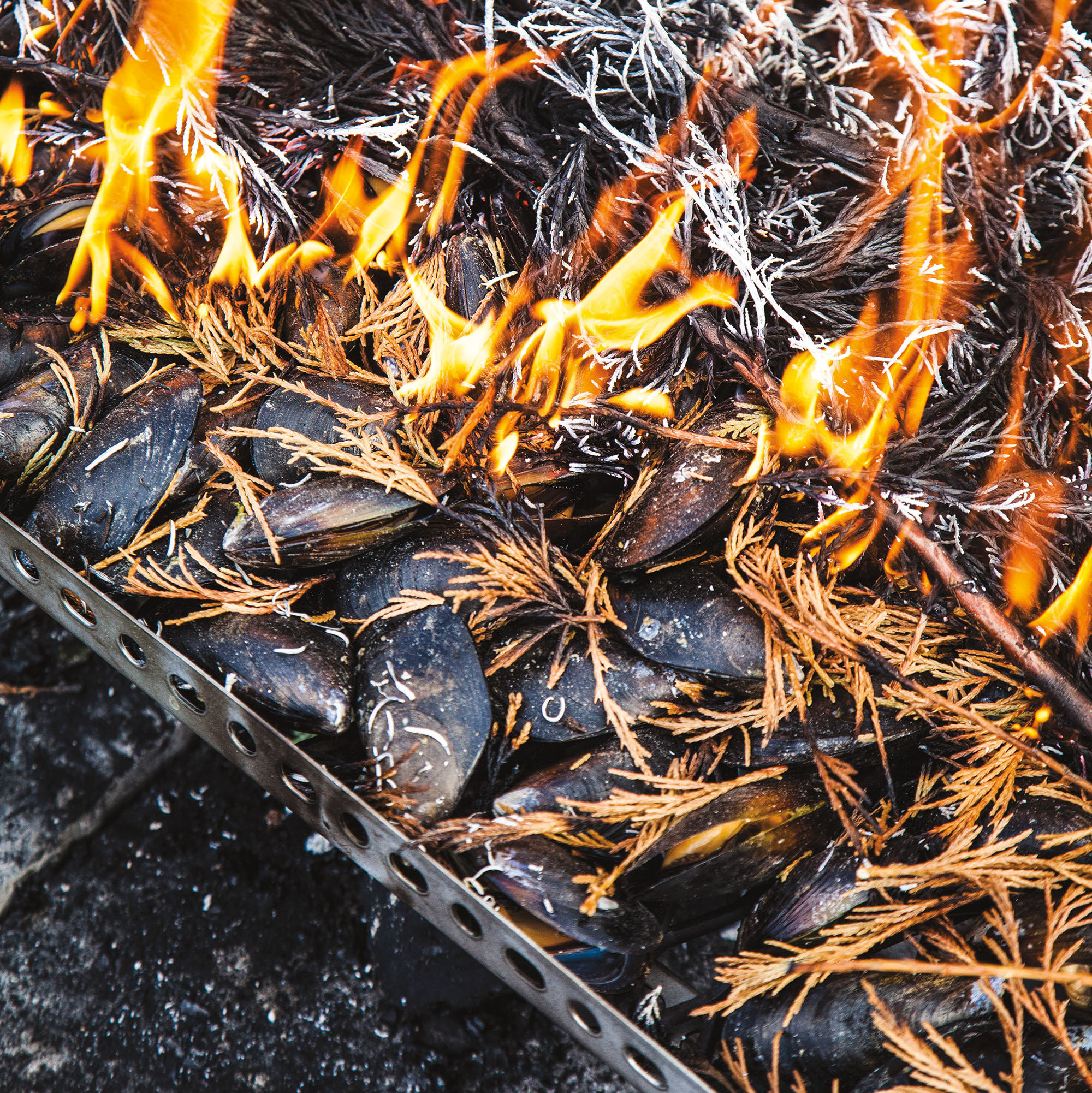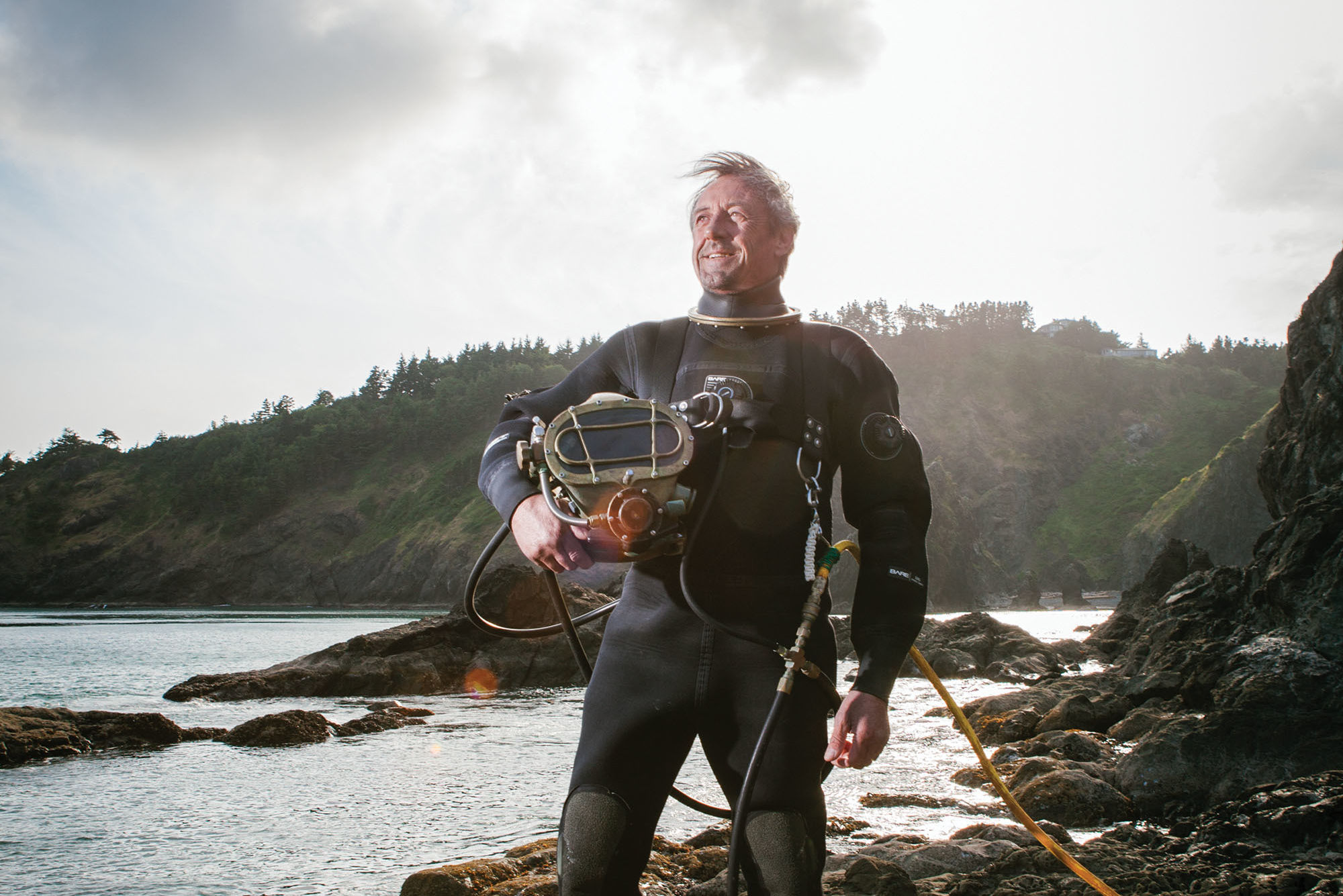Is Portland Finally Ready for Real Sea-to-Table Eating?
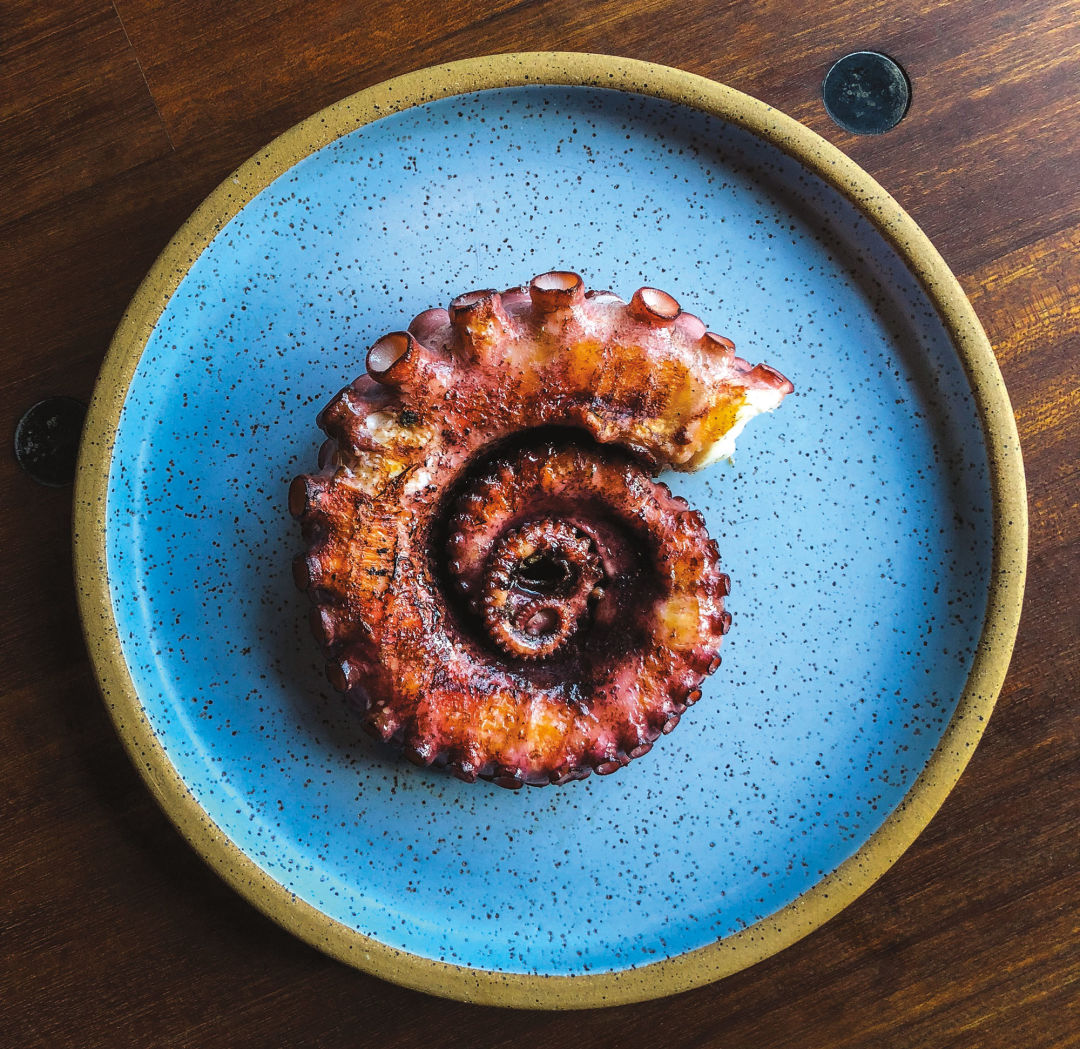
A curl of giant Pacific octopus—accidentally caught off the coast near Garibaldi—served at Portland’s high-concept, all-local seafood restaurant Erizo
Image: Courtesy Jacob Harth
“We all know civics, right?,” Lee van der Voo asks. “Like cops and courts and city council. We know how the world works. But as soon as we step onto the blue side of the map, we don’t know anything.”
Van der Voo actually does know some things about the briny deep, as the Portland-based author of The Fish Market, a 2016 book about commercial fishing in America’s “economic zone” (anything within 200 nautical miles of shore). She also grew up on the East Coast, “convening around seafood”—dockside lobster rolls, clams by the bucket—in a way that might feel unfamiliar in Oregon. Even in fishing towns like Newport, Astoria, and Port Orford.
Unlike in, say, Maine or Connecticut, Oregon’s sea-to-table culture isn’t shipshape. Our big cities are significantly inland. We lack the nonprofit fish auctions of New England and Hawaii. Oregon seafood processors largely bulk-export our tuna, shrimp, crab, and whiting to Asia, instead of trucking it two hours east to Portland. The result is a coastal state where people whisper “eat local” but may have never thrown local mussels on the grill or learned when, exactly, chinook is in season.
Instead, we buy that mystery bowl of clam chowder or some sort of fish and chips, probably sourced from a massive Russian or Japanese trawler. That salmon in our handrolls? If Pacific wild-caught, it could be endangered; if Atlantic farmed, it could be polluting coastlines from Norway to Chile. Add in murky seafood industry practices, ocean acidification, gyres of marine plastics, and redlisted fish species. The end result, for many seafood lovers, is a sort of generalized paralysis—a feeling that maybe it’s better, or more sane-making, to avoid these waters altogether.
“We know more about space than we know about the ocean,” says Jacob Harth of Portland’s Erizo (“urchin” in Spanish), a new spot gambling on an all-local seafood prix fixe menu. Skimming his 20-course tasting menu—Copalis Beach razor clams in lovage broth, bycatch (accidentally caught) octopus with wild rice romesco—will remind you that Pacific Northwest seafood is really interesting. Also, intimidating. But here’s the thing: silently deferring to your sushi chef or buying whatever fillet looks “the freshest” won’t help heal the ocean or land you the healthiest, tastiest, most thoughtfully caught fish.
“We’re not going to stop eating seafood, but the things that we eat need to be eaten for a reason,” says Harth. He, and a handful of other Portland chefs, fishmongers, distributors, and activists want you to demand to know more about the seafood in front of you. (See our Morality Matrix for help.)
“People in general are very distrustful of the seafood industry,” says Duncan Berry, cofounder of Fishpeople, a seven-year-old, Portland-based maker of Northwest-sourced, nationally distributed seafood products. (Think shelf-stable baggies of wild crab bisque so traceable you can scan a code to get the name of the fisher.) “Seafood is a high-value protein. Combine natural greed around valuable things [with] 90 percent of that coming from another country, and you have a recipe for dishonesty.”
Berry is citing a surprising government statistic; about 90 percent of the seafood we eat in America is imported and often farm-raised—Ecuadoran shrimp, Chinese tilapia, Canadian clams. It’s even possible your Vietnamese tuna or imported fish sticks were American-caught. (Seafood “comes” not from where it’s harvested, but where it docks for processing.) The distrust stems from supply chains so long, convoluted, and poorly inspected that your pan-seared halibut’s journey might be as unknowable as the inky drink from whence it came. It may not even be halibut.
According to second-generation fishmonger Lyf Gildersleeve, of seafood market Flying Fish Company, the first step is simply to buy American. Especially in restaurants, where we consume 70 percent of our seafood.
“At the restaurant, or the fish market, or the grocery store, if [you] see something domestic, unique, and sustainable, buy it. It creates the demand,” says Gildersleeve. He, Berry, van der Voo, and Harth agree that American fisheries are among the world’s best regulated. And the more local we get—from that dayboat Oregon albacore at Bamboo Sushi to urchin snagged just off our reefs (meet a diver here)—the better for both our carbon footprint and struggling coastal fishers.
The next step is diversifying our plates. At Flying Fish, where California smelt shares space with Oregon bay shrimp and sablefish, Gildersleeve tries to take pressure off the world’s overfished “big four”: salmon, sea bass, tuna, and cod. He traces a clear path from a diner’s decision—maybe to order Oregon rockfish instead of Hawaiian snapper—back through chef and seafood distributor to the processor buying from a just-docked boat in Garibaldi. He’s particularly invested in an idea dear to Portlanders—zero food waste. (In seafood: you kill it, you eat it).
“If the boat has [bycatch like] ivory king salmon or giant Pacific octopus, and the distributor doesn’t buy it because the chef doesn’t want it,” explains Gildersleeve, “then the fisherman just throws that fish back into the ocean, dead.”
Harth, meanwhile, says chefs can’t wait for customers to start asking for bycatch specials or the name of the clam diver. He thinks chefs need to force the conversation, and that means taking risks.
“So many amazing chefs are just taking things out of a box,” says Harth. “That ties in with what the problem is with the fishing industry. They’re just trying to meet the demand, and the demand is all wrong.”
Harth sources from some of Portland’s most niche distributors, including Wilder Land & Sea and Lauren Vannatter of California-based TwoXSea (the operation behind McFarland Springs rainbow trout, the world’s first vegetarian-fed fish, farmed near Shasta and in Southern Oregon). He and partner Nick Van Eck also harvest their own shellfish, sea greens, and crustaceans. Harth admits his 14-seat restaurant is nimble—able to rewrite menus for a last-minute sardine delivery. But he doesn’t let larger seafood establishments off the hook.
“Before it becomes a consumer thing, it has to be a chef thing. People need to be hearing about it in restaurants,” says Harth. One example, he says, are Oregon butter clams, which he thinks should be far more common on Portland menus. “We’re talking about a product that’s world-class, that chefs don’t touch because it’s too foreign, too much work.”
In the end, asking Oregonians to think sea-to-table isn’t a stretch. We’ve done it already—just with grass-fed livestock and organic farms instead of branded Oregon albacore and an appetite for trash fish. According to van der Voo, we should be proud of our home-turf fisheries: our albacore, bay shrimp, shellfish, and Dungeness crab.
“If you’re buying locally and regionally,” she says, “if you have a sense that ‘this fish actually comes from the Pacific Ocean, where I live,’ then you’re halfway there.”
